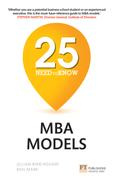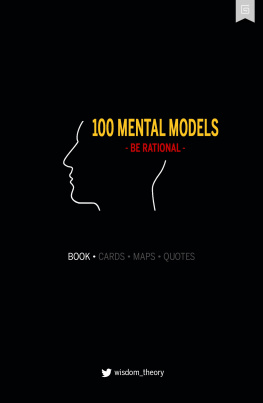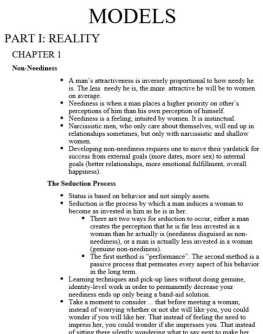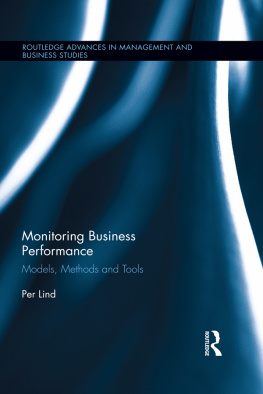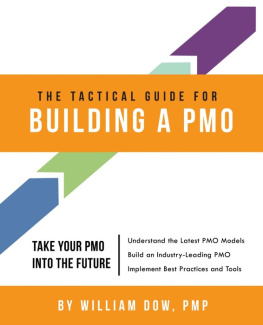Figure on adapted from Christensen, C.M. (1997) The Innovators Dilemma: When new technologies cause great firms to fail . Boston, MA: Harvard Business Review Press. Copyright 1997 by the Harvard Business School Publishing Corporation, all rights reserved. Reprinted by permission of Harvard Business Review.
Introduction
There are many models and frameworks in use in the business world today, and it is hard to keep track of them all. We wrote this book to help you make sense of the most important of these models to understand where they came from, when you might use them, how to use them and what are their biggest benefits and weaknesses.
The title 25 need-to-know MBA models reflects the fact that these models are all taught to students at business schools seeking to get an MBA (Masters in Business Administration). The MBA is a generalist degree in other words, it is designed to provide students with a broad grounding in all the key aspects of business. This book reflects the breadth of the MBA. It has five sections, each one corresponding to a typical core course in the first year of an MBA programme. While we only discuss five models in each section, we also make reference to other important models, to give you a flavour of the scope of the materials covered in such a core course.
Who should read this book? If you are doing an MBA, this is an easy-to-access summary of the key models you are being taught, with useful pointers about how they should be applied, and follow-up readings if you want to know more.
If you are an executive or a manager who didnt go to business school, the book is a valuable reference guide. If your subordinates or colleagues start throwing out unfamiliar terms they picked up at a business school, you will want to know what they are talking about. Most of the concepts in the world of business are actually pretty straightforward this book provides enough details on twenty-five of the most important ones to get you up to speed.
Finally, the book should also be of interest to prospective MBA students, who are studying in advance of entering an MBA programme or who are fascinated by the prospect of doing an MBA. If the models and concepts described here look valuable and interesting, then you should take the plunge and sign up for a programme. While we have covered the need-to-know models here, it goes without saying that you learn vastly more in the course of an MBA programme than could ever be picked up in a single text.
What is included?
In researching this book, we reviewed the course materials at the business schools we work with, or where we have good friends (e.g. London Business School, Richard Ivey School of Business INSEAD, Wharton, Harvard), and we sought to identify the most important models, frameworks and concepts that students were taught during their core courses. (In most programmes, the core courses are followed by a range of elective courses that allow students to specialise.) We also market-tested our initial selection with a group of students and graduates, by asking them how important they thought each model was. This allowed us to fine-tune our choices.
While our selection process was careful, the final list of models is still highly subjective. It is a bit like choosing the most influential people in history, or the best movies of the last twenty years: there is some data you can use to support your choices, but ultimately there is a lot of judgment involved, and we wouldnt expect anyone else to agree 100 per cent with the list we finally settled on. One important criterion we used, for example, was deliberately to include a mix of classic and contemporary models in each section, so you can develop some perspective on the evolution of the subject matter.
The book is organised into five parts, corresponding to five of the most important areas or topics that are taught in an MBA programme. Each section includes the five need-to-know models, arranged in alphabetical order, and at the beginning of each section we have written a brief overview to explain how the models we chose fit together. Of course, there are many important topics in each of these areas that we dont have space to cover. The further readings listed at the end of each chapter provide useful pointers for where to get additional information.
We will be the first to acknowledge that our chosen structure is a very traditional way of looking at the business world. Some business schools have sought to develop cross-disciplinary or integrative approaches to their teaching, for example by focusing on real-world business challenges. But they are in the minority the vast majority of business schools still organise their courses as we have done here.
To keep the book to a reasonable length, we have had to make some tough choices. We have not included any models that describe the macro business environment, whether in terms of economic theory, government policy, law, or trade regulations. We have steered clear of basic statistical models and tools, and we have spent relatively little time on individual-level psychological issues, or on the challenges of starting a business from scratch. We also made the tricky decision not to have sections on accounting or operations management. These are important topics, but in our experience they are becoming less central to the curriculum in business schools, and decreasing numbers of MBA students are moving into jobs in these areas. As a general rule, we have focused on issues that are the concern of the firm or business as a whole. Ultimately, these are things that a general manager in a firm needs to know.
What is a model?
We have used the term model very loosely in this book to include frameworks, concepts, models and tools. We decided that it was more important to cover the key ideas that MBA students are exposed to in their core courses, than to stick narrowly to a dictionary definition. For example, open innovation is an important concept in the world of innovation and strategy today, so we have a chapter on it, even though it isnt a model as such.
Technically speaking, a model is a simplified version of something more complex it helps you understand a specific phenomenon by identifying its key elements. A framework is a way of structuring your understanding of a multi-faceted phenomenon, often by pulling together a number of diverse elements. A concept is a high-level idea, a way of looking at the world that provides new insight. And a tool is a practical way of applying a body of thinking to address a particular task. These distinctions are of academic interest only; what matters is that this book includes what we believe to be the most important models, frameworks, concepts and tools in each area.

